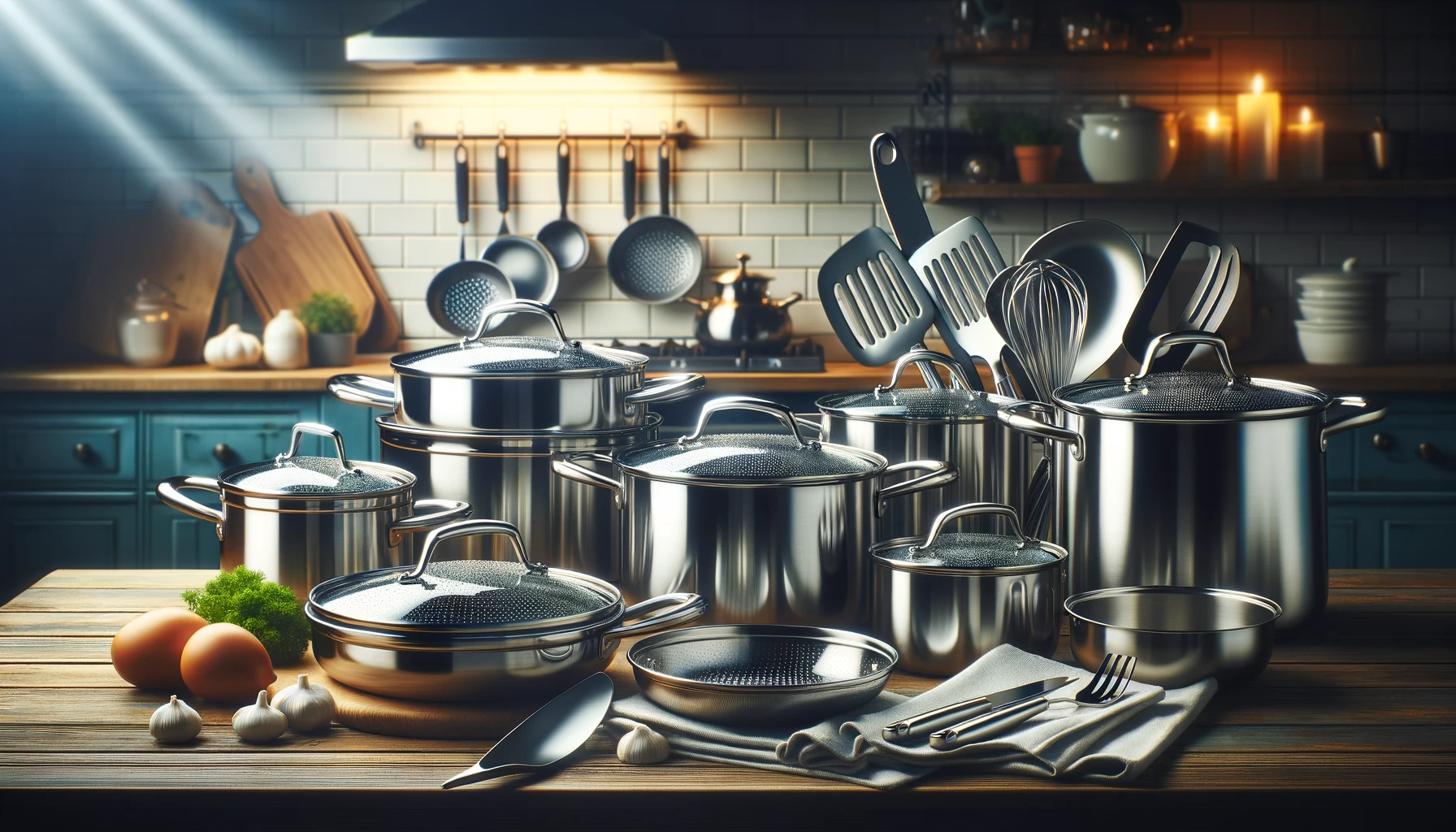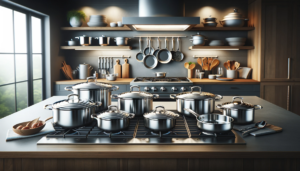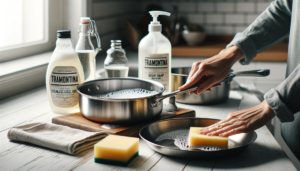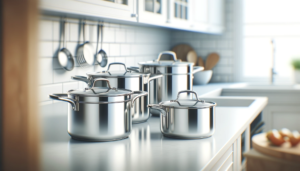Stainless steel’s durability makes it a go-to for long-lasting cookware.
But exactly how many years of reliable service can you expect from those shiny pots and pans?
Quality stainless steel cookware that receives reasonable care will keep cooking superbly for 50 years plus before showing notable decline.
Let’s dive in to understand what gives stainless steel such impressive longevity and how you can make it last.
How Long Does Stainless Steel Cookware Last?
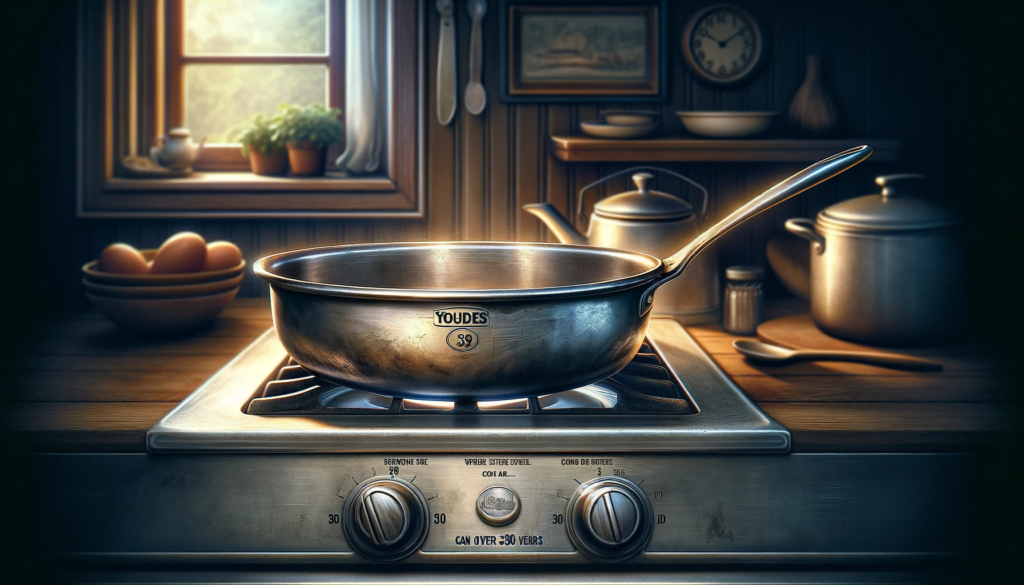
Quality stainless steel cookware lasts for a minimum of 30 years with proper care.
Many brands claim working lifespans exceeding 50 years for their stainless steel pots and pans with some pieces functioning far longer when well-maintained.
Individual experiences reveal properly cared for stainless steel cookware lasting over 40 years of continual use.
Only extensively abusing or utterly neglecting quality stainless steel brings premature decline before enjoying 3 to 5 decades of reliable cooking performance.
But applied conscientiously following manufacturers’ recommendations, expect stainless steel cookware to endure 30 to 50 years before requiring replacement.
What Is Stainless Steel Cookware?

Stainless steel cookware encompasses any pots, pans, kettles and baking dishes designed for cooking that utilize stainless steel as the primary material in their construction.
Stainless steel itself denotes a group of iron-based alloys that contain at least 10.5% chromium content by mass.
Manufacturers form and shape stainless steel into cooking vessels by processes like stamping, spinning, pressing and welding.
The advantageous properties stainless steel provides makes it a ubiquitous and beloved cookware option inside many kitchens.
The most defining quality of stainless steel is its notable resistance to corrosion and rusting due to the chromium constituents mixing with atmospheric oxygen to form a protective passive layer shielding the metal underneath.
This brings an attractive, enduring sheen to cooking surfaces able to withstand exposure to water and moisture quite well.
Stainless steel also exhibits poor heat conductivity compared to the aluminum or copper it often sandwiches within cookware.
But the sturdy steels applied as external layers contain and distribute heat very evenly across their surface once warmer.
This grants stainless steel cookware reliable, uniform heating with minimal hot spots that ruin inconsistent cooking.
Stainless steels have also become incredibly durable cookware materials thanks to modern metallurgy and manufacturing.
Quality stainless steel stands up well to nicks, scratches and deformation from drops or overheating.
These beneficial properties – anti-corrosion, limited heat conductivity, durability – make stainless steel an ideal surface for searing, simmering, frying, baking and more.
Cooks appreciate stainless steel’s utility and resilience supporting most any recipe.
And innovative metal compositions and construction techniques yield stainless steel cookware that should endure for decades if reasonable care practices are employed.
When both well-crafted and well-kept, stainless steel pots and pans pass functional and timeless down generations.
How Durable Is Stainless Steel Cookware?
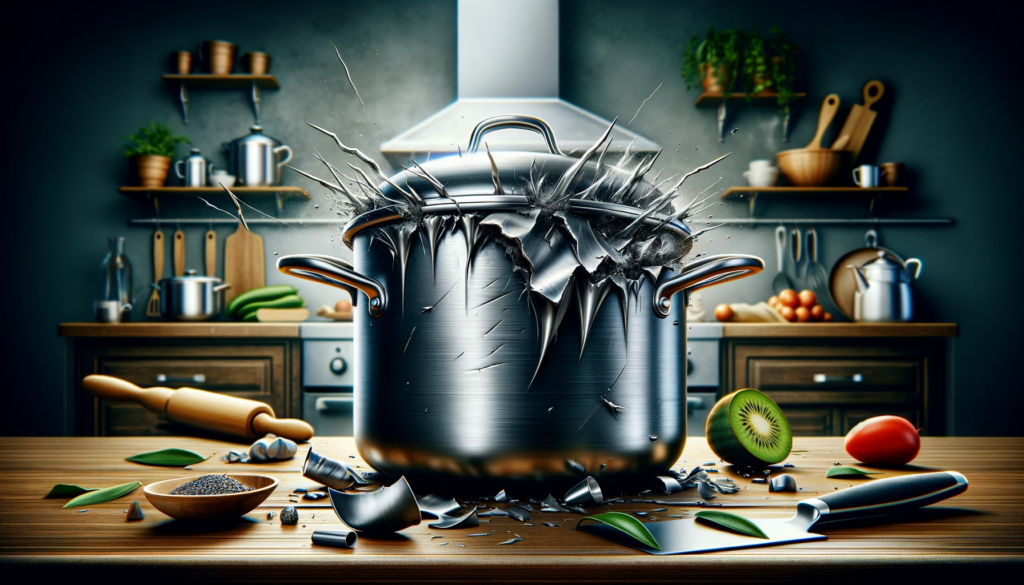
Stainless steel ranks among the most durable and resilient modern cookware materials available.
Leading stainless steel cookware boasts impressive lifespans ranging upwards of 50 years or beyond when owners apply proper usage and care.
What lends stainless steel such lasting integrity?
For one, stainless steel delivers unparalleled sturdiness against scratches, warps and perforations even under repeated high heat home cooking.
Stainless steel alloys used in quality cookware contain significant nickel or manganese to amplify hardness and strength.
The more austenitic the stainless steel’s metallurgic structure, the less ductile and more damage-resistant it performs.
Cookware-grade steels exhibit high tensile strength able to withstand up to 30,000 psi of force before yielding.
This fortifies stainless steel cookware against unsightly dings or penetrations that compromise utility.
Aurora Metals hangs an entire automobile body from one of their 18/10 stainless steel frying pan’s handles to demonstrate the sheer toughness imbued.
Furthermore, stainless steel’s thermal properties protect integrity despite constant thermal shocks.
Stainless steel does not conduct heat amazingly which helps the material resist expanding and contracting drastically when temperatures shift from hot to cold.
This stability preserves stainless steel’s form under rapid heating or cooling it may experience on stovetops.
Stainless steel’s innate density also provides greater specific heat capacity over other common metals.
This means more energy must transfer into stainless steel to raise its temperature.
Consequently, stainless steel rarely overheats dangerously in ways that permanently damage its crystalline molecular structure.
These thermal characteristics grant stainless steel remarkable resilience most other metals lack.
Stainless steel also boasts lasting luster untouched by gradual oxidation over decades of use.
The aforementioned passive layer of chromium oxide stagnates further surface corrosion through stainless steel’s lifecycle.
While microscopic pitting damage may still manifest, this largely superficial effect rarely impacts overall performance.
And visible scratches that do accumulate seldom penetrate beyond the protective patina into structural steel.
So stainless steel maintains its brilliant, mirror-like gloss with basic maintenance prioritizing gentle washing.
All this withstandability makes quality stainless steel exceed most other cookware materials in durability testing.
And with fundamental care against truly neglectful practices, stainless steeloffers generations of reliable cooking.
That lasting integrity explains why so many stainless steel cookware makers confidently offer “lifetime warranties”, sometimes lasting past original owners.
When both well-constructed and well-kept, stainless steel pots and pans pass functional and timeless down generations.
What Impacts The Lifespan?
Myriad factors affect stainless steel cookware lifespan expectancy:
1. Quality Of The Actual Stainless Steel
The overarching determinant of stainless steel’s durability comes down to the quality of the steel itself.
Premium stainless steel alloys clearly outlast generic formulations thanks to optimized compositions and proprietary production processes.
For example, All-Clad’s proprietary MASTER core stainless steel delivers heightened structural stability and corrosion immunity versus basic 18/10 steels.
How manufacturers mill, roll, shape and temper the steel during fabrication also affects traits like weld strength, grain size, surface defects and hardness modulation.
Superior metallurgy and meticulous manufacturing enhances stainless steel’s resilience over entire lifecycles.
Cheaper steels succumb quicker to wearing failings.
2. Cookware Design
How appropriately cookware is engineered around stainless steel improvements also modify longevity projections.
Clever design considers how stainless steel expands, conducts and reacts to better reinforce its strengths while minimizing its limitations.
Cladding stainless steel around highly conductive metals like aluminum or copper as the core material prevents undesirable hot spots through walls.
Impact-forgiving riveted handles and flared rims improve structural soundness against drops or bangs.
Non-reactive interior finishes aid stainless steel’s natural corrosion resistance for amplified stain protection.
Such smart implementations boost stainless steel functionality over decades rather than allowing early underperformance.
3. Gauge & Weight
The thickness or gauge of stainless steel used in cookware directly correlates to durability.
Thicker, heavier gauge stainless steel simply better withstands deterioration from daily use.
Heftier steel pans resist warping even under repeated, scorching heat applications.
Their added mass seemsthem less affected by minor impacts with utensils or surfaces.
Thinner stainless steel cookware still offers adequate longevity but proves more susceptible to misshaping, subtle abrasions or poor handle welds that eventually undermine performance.
Discerning cooks prefer thicker 3 to 5 mm stainless steel for lifelong cookware.
4. Care & Maintenance
How well owners treat and maintain stainless steel cookware throughout its use also greatly affects lifespan.
Stainless steel is not truly immune to damage without due care.
But relatively simple preventative measures eliminate common threats to stainless steel integrity.
Allowing food residue to bake on will corrode finishes.
Scraping or cutting directly on the stainless degrades protective top layers.
Dishwasher detergents combined with harsh heat-dry settings slowly strip away stainless steel’s brilliance.
Reasonable care around cleaning, heating limits and storage spacing keeps stainless steel pristine for decades of cooking.
Otherwise neglectful practices lead to surface erosion, metal leaching, micro-fractures or even oxidation occurring decades prematurely.
With collective consideration for stainless steel quality, cookware craftsmanship and owner behavior, stainless steel pots and pans will feasibly endure 50 years or more before noticeable performance decline.
Expect A Lifetime Of Use
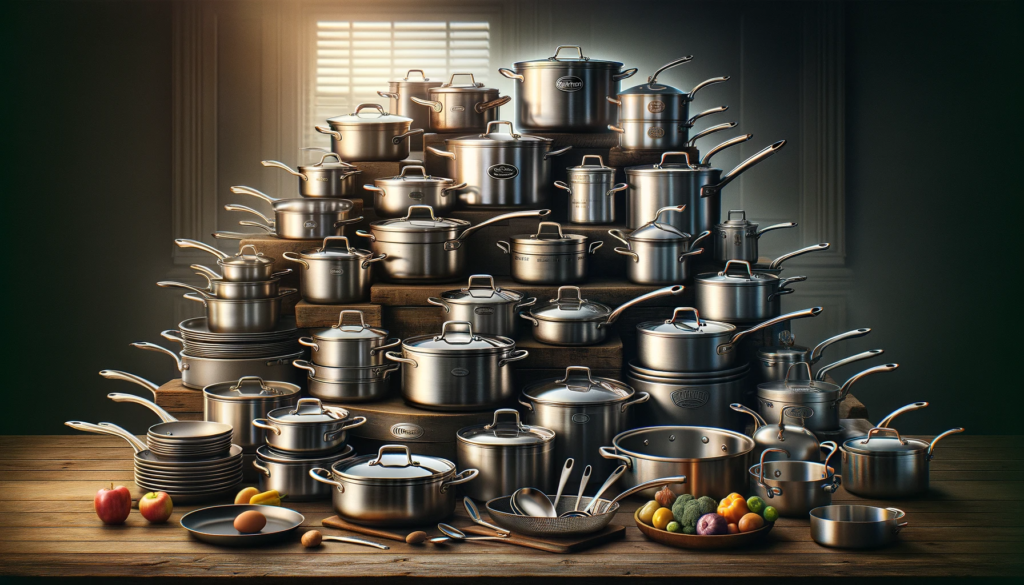
Reputable stainless steel cookware brands confidently assert expected lifespans ranging upwards of several decades or more even under regular use.
For example, All-Clad guarantees all their stainless steel cookware stays free from defects in materials and construction for life.
Misen and Made In claim working lifespans for their stainless steel pots and pans exceeding 50 years.
KitchenAid ovenware made of stainless steel steel sees a 25-year warranty.
Such generous yet commercially-viable assurances speak to stainless steel’s credibly lifelong cooking utility when well-formulated.
Plenty of consumer experiences reinforce stainless steel’s functional viability over extensive timeframes.
One home cook reported their 30-year old stainless steel skillet still performs fantastically despite almost daily use having been passed down across three generations.
Food bloggers preach cherishing vintage, faded yet favored stainless steel pots that season beautifully.
Second-hand stores frequently pitch durable stainless steel finds from the 70s or 80s still splendidly active.
While the average active lifespan for fuller stainless steel cookware sets may realistically shake out between 20 to 30 years, exceptional pieces operate successfully for 50+ years.
And lifelong stainless steel is not solely the stuff of kitchen lore.
Various aerospace and chemical processing industries rely on specialized stainless steel alloys to withstand decades of punishing friction, heat and pressure while avoiding catastrophic failure or Marion replacement.
Cookware-grade stainless steels applied in residential kitchens should reasonably supply similar reliability (if not load capacity) thanks to comparable corrosion controls.
Just take care not to regularly push household stainless steels past their thermal or mechanical limits and service lives extending for decades present no surprise.
Provided sound construction from reputable producers and responsible care from owners, stainless steel cookware lasts multiple lifetimes.
Proper Care And Maintenance
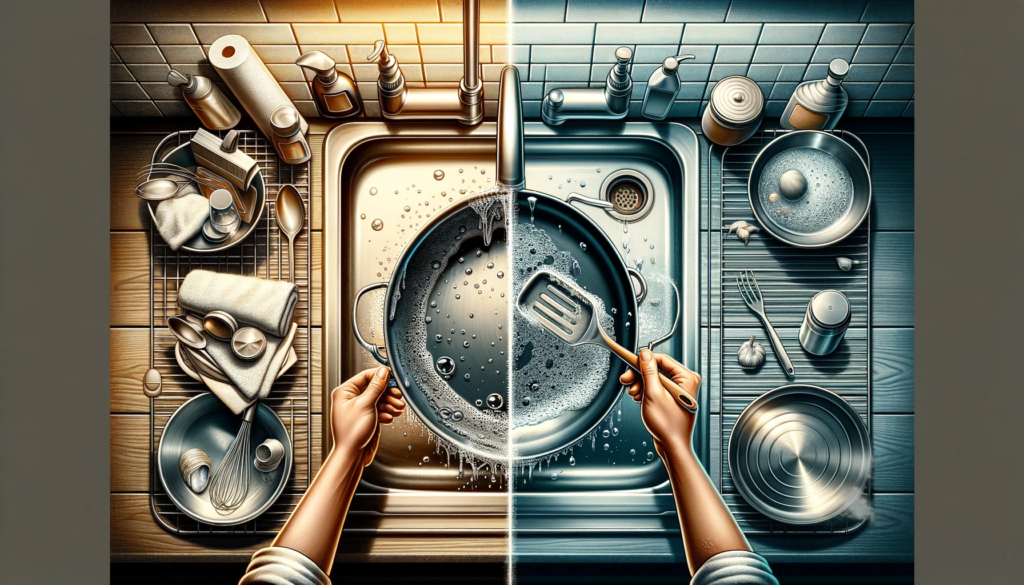
To benefit fully from stainless steel’s structural longevity, adhere to several key care guidelines:
Use Conservative Heat Settings
High stovetop heat exacerbates expansion and contraction forces within metal cookware.
Repeatedly pushing stainless steel past optimum heating thresholds strains material integrity over decades.
Preheating gently then turning down heat once warmed reduces thermal wear.
Simmering or baking also preserves stainless steel resiliently versus aggressive sautéing or searing which risks material fatigue.
Avoid Metal Utensils & Abrasives
Scraping stainless steel cookware surfaces aggressively with metal spatulas, spoons or scouring pads scratches protective top layers guarding against corrosion.
Gradually such abrasions deplete chromium reserves denying stainless steel’s anti-rust capacities.
Use non-abrasive plastic, silicone, wooden or rubber utensils to preserve the essential passive layer with cooking.
Use Non-Corrosive Cleaners
Chlorine-based bleaches or chemical soaking damages stainless steel’s protective qualities if residual moisture is left behind without swift drying.
Use mild, non-chlorine soap with warm water instead.
Immediately towel dry cookware after hand washing or dishwasher cycles finish to inhibit lasting moisture possibly inviting surface rust if left overnight.
Hand Wash Or Use Safer Dishwasher Cycles
Hand washing fully preserves finishes although most modern dishwashers safely accommodate stainless steel with proper settings.
Ensure dishwasher detergent qualifies as non-abrasive before cleaning expensive stainless steel inside.
And avoid high heat drying cycles as leftover moisture severely tarnishes stainless steel contacting sustained baked air.
Applying this simple care methodology helps stainless steel cookware realistically operate through decades of use.
Respect stainless steel’s structural limits and nurture its protective qualities and cooking companions for life result.
Conclusion
Stainless steel cookware, when properly maintained, can deliver a lifetime of use.
By choosing high quality stainless steel, implementing careful cooking practices, and handwashing or using safer dishwasher settings, your pots and pans can potentially outlive you.
While no cookware lasts forever, few materials match stainless steel’s resilience.
So invest in stainless steel, handle it with care, pass it down, and enjoy generations of happy cooking.
